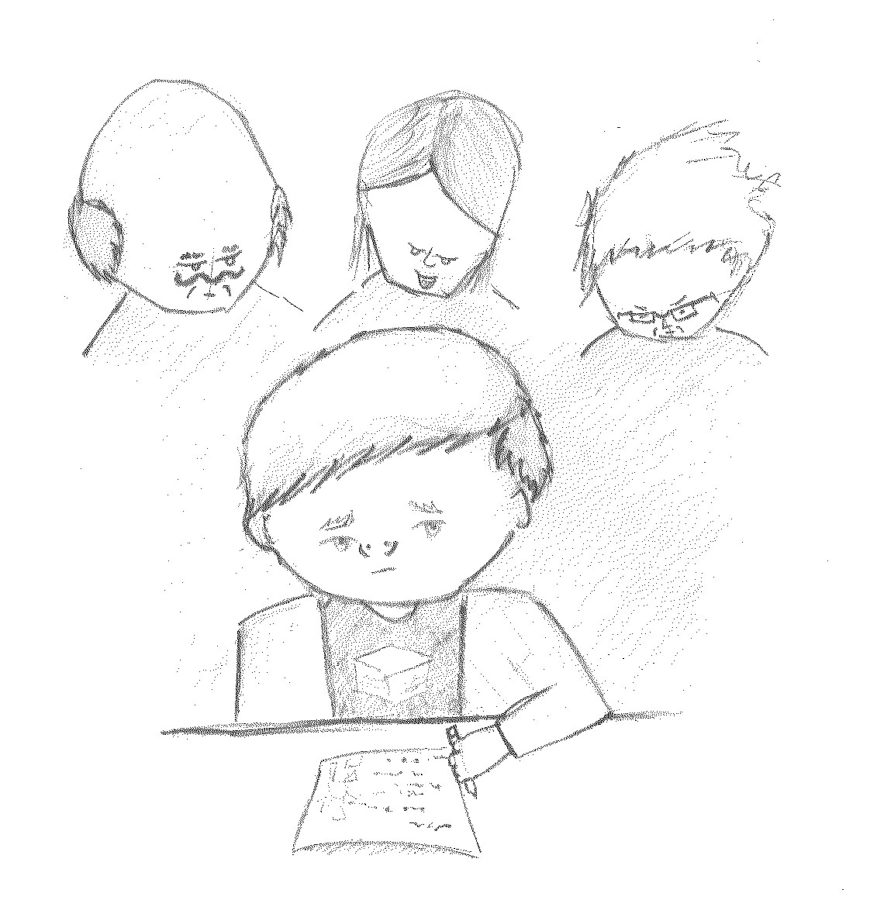Teacher Walk-Throughs: Unveiling the Not-so Terrible Truth
Have you ever had a group of teachers or administrators walk into your classroom unannounced? Did it feel as though they were peering over your shoulder, watching your every move?
Well, the good news is that teacher walkthroughs aren’t nearly as daunting as they seem.
Almost every teacher in the building has been visited by a group of teachers and administrators, often when the teacher isn’t giving a particular lesson and students are doing work on their own. This change of pace from the normal learning environment is often intimidating to kids. In reality, however, the walk-throughs are benefiting students.
The purpose of teacher walkthroughs is to see how engaged students are within the classroom. They observe the student’s behavior and work, and then ask questions about the topic they are learning.
Through all of these questions, they are taking notes about how engaged the students seem to be. They record notes about the kinds of task the students are engaged in and talk about ways to make learning more active and engaging. The district is partnering with John Antonetti, a teacher and author who wrote “17,000 Classroom Visits Can’t Be Wrong.” He writes, “Up until about a decade ago, the word engagement was used in a binary way to describe student behavior – students were either working or they were not.” Today, that mindset is being changed to adhere to the needs of students.
Teachers try to figure out the engagement level of students in order to make their lessons more exciting and relateable to sixth, seventh, and eighth graders. If students seem engaged, they will incorporate more of the lessons that seem to excite students into the curriculum. If students don’t seem to be that intrigued in the lesson, they will adapt the curriculum in order to make students more engaged within their learning environment. Educators who observe the classroom strongly believe that just because students are “on-task” with the lesson doesn’t mean that they are actually learning from it and interested in the topic. The notes that they take will later to be used to incorporate lessons into the curriculum that genuinely fascinate students.
When teachers and administrators enter the classroom, it’s important to remain calm and not be nervous. Remember that they are not judging your skills or abilities; they are simply trying to figure out what you enjoy to learn about as a student and what needs to be done in order to improve the curriculum. In the end, teacher walkthroughs benefit everyone; teachers get to observe a classroom environment, and students will be taught more interesting lessons in the future.




Mary Bazile • Mar 6, 2018 at 1:59 pm
I always thought the walk in’s were for me because i think that I got in trouble which gives me anxiety.
Coco Crombie • Mar 6, 2018 at 11:10 am
I think that this article is very helpful. I had previously thought that the walk-ins were happening to judge the teachers and see if the teachers are doing a good job teaching, but now I know that those walk-ins are happening just to help benefit the students, and see what you could add on to a lesson to make it more entertaining. Before, I felt that the walk-ins were kind of stressful, but now I’ll understand them more, so it will be less stressful.
Abi Bley • Mar 6, 2018 at 10:50 am
I think that the teacher walk in’s are beneficial because we are getting watched and when you are being watched, kids often tend to try to be on their best behavior and once that gets in their system, it is easier to sty engaged even when a teacher is not watching.
Annabelle • Feb 15, 2018 at 9:56 am
I have always been stressed out about these because I thought that the teachers were judging my personal abilities. Thank you for clarifying it for me and others who feel similarly.
Alexandra Scully • Feb 15, 2018 at 9:31 am
I personally find these walk in’s stressful because I know they’ll be asking questions. This article does show that this is for the benefit for our education, but it doesn’t make it much better for students who don’t really like talking or confrontation in general.